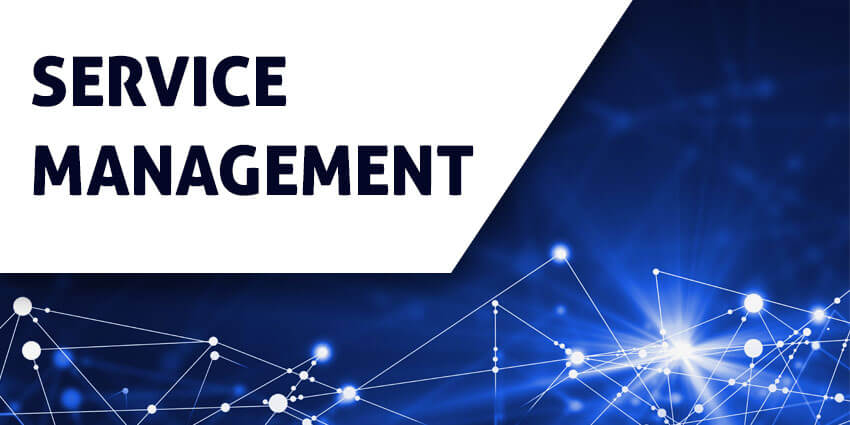In today's business environment, companies increasingly rely on their internal IT organizations to offer services and functions critical to the business. As IT functions are increasingly integrated into the day-to-day operations of companies, more and more IT organizations choose to adopt the best IT Service Management (ITSM) practices, including the ITIL® framework, to meet rapidly changing needs of the companies they serve.
Below we list 20 benefits of IT Service Management that organizations can obtain through the adoption of processes, procedures and policies.
1. Improve efficiency
Efficiency simply means getting the most out of the resources you have available. IT service management has many components that help organizations maximize their resources. One component is the management of IT assets, the set of processes that are used to optimize the management of the life cycle of IT assets and seek the most profitable strategies for asset acquisition and disposal.
2. Reduce operating costs
IT infrastructure and operations spending accounts for approximately 60 percent of total IT spending worldwide. As they increase in size and maturity, these IT organizations must hire even more I&O personnel, or else they excessively risk tactical operational processes. The adoption of IT service management can help IT organizations scale their operations more easily without the need for over-hiring, thanks to automated functions that reduce the manual workload for IT operators.
3. Risk-free implementation of IT changes
When changes are poorly planned, tested and communicated to the business, there is a significant risk that a recently implemented change may cause a significant business or service disruption. The ITIL Change Management process describes a system to ensure that your IT organization can implement new changes in the IT environment in a way that limits or eliminates the risk of damaging your business with a change based on its potential impact, much before they manifest themselves in a project deployment.
4. Better accountability through standardization
The creation of responsibility through the standardization of services is a defining characteristic of IT service management, and one that helps IT organizations improve compliance with IT policies and procedures for the provision of services. One of the main objectives of ITSM is to standardize the provision of services within the company through the implementation of functions such as the IT service, along with formal processes documented for the delivery of each type of IT service.
The IT service management software also allows IT managers to track operator actions and how incidents or service requests are addressed.
5. Improve effectiveness
Organizations that adopt ITSM structures and processes benefit from the formalized systems that drive improvement over time when executed effectively. Adopting a structured response to incidents can decrease the average response time and average resolution time, while focusing on crisis management will help reduce the average recovery time (MTTR) when a service interruption occurs. ITSM offers a framework to increase the effectiveness of any aspect of the provision of IT services through the process of continuous service improvement.
6. Improve responsibility within business functions
Commercial functions are the activities carried out by a company. They can be divided into basic functions, which are the activities designed to generate income, and support functions, which serve to support and rationalize the basic functions. IT itself is a critical support function in most companies, especially those in which the IT organization has adopted ITSM to align its activities more closely with the company.
The management of IT services includes the implementation of processes to monitor the activity in the organization's network and IT infrastructure and detect violations of the company's security policies.
7. Increase productivity with self-service
Organizations use ITSM best practices to drive improvements in self-service productivity. Self-service is a convenient alternative to the traditional help desk model that can help tech-savvy users solve incidents or fulfill service requests without the help of IT operators, which reduces ticket resolution costs and increases customer satisfaction.
8. Improve visibility in operations
Visibility describes the extent to which managers, executives and staff in different areas of the business can see what is happening in other areas of the business. Lack of visibility in IT operations is a common problem for organizations that have not yet adopted IT service management.
This is why there is a need to align the IT and business strategy, a process that ensures that the company knows exactly what activities are prioritized in IT operations at any time.
9. Improve visibility in performance
As an IT organization matures its processes, it gains greater visibility into performance as follows:
-
Level 1 (Initial)
Unpredictable and poorly controlled process. Performance cannot be measured due to inconsistency.
-
Level 2 (Managed)
The process can be characterized for some projects, but it is often reactive. Lack of standardization.
-
Level 3 (Defined)
ITSM helps organizations clearly define their processes.
-
Level 4 (Measured)
Once a process has been standardized, ITSM software can be used to capture process data and measure its performance. The ability to capture this data creates true visibility of performance that helps organizations move to stage five.
-
Level 5 (Optimization)
Organizations take advantage of the visibility of performance in the knowledge that drives performance improvement over time.
10. Better service and customer experience
For organizations, customers are the users of the company that depend on IT services to support their daily activities. We can highlight two components of IT service management that help improve service delivery and customer experience.
The service strategy process. This means that the IT organization is working on the services that the company wants, which leads to a better customer experience.
A formalized ticketing system and incident response. The incident management process improves the service by ensuring that the IT organization responds to each incident report or service request sent.
We recommend you continue reading this topic in our post The 20 benefits of IT service management (Part 2)

